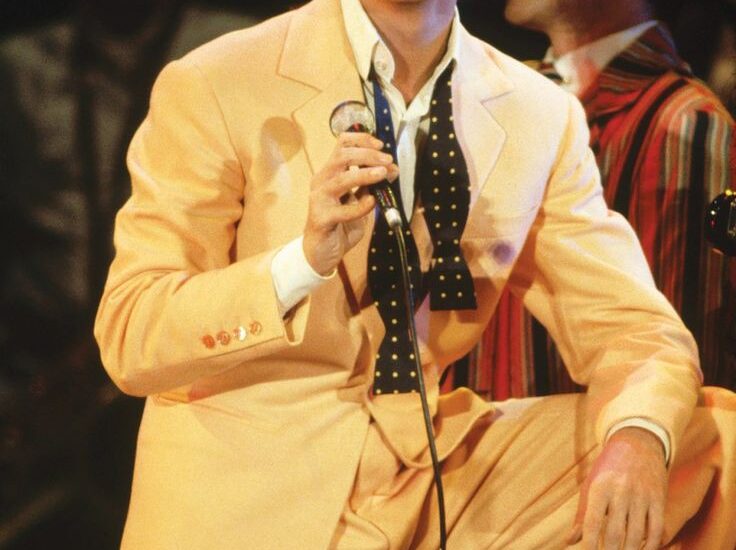
Artistic Visionary: David Bowie stands as a true visionary in the world of music, a guitarist whose artistry knows no bounds……
David Bowie, one of the most influential musicians of the 20th century, was a true visionary who transcended the boundaries of music and art. His unique ability to fuse various genres, coupled with his theatrical flair and constant reinvention, set him apart as a groundbreaking figure. From his early days in the 1960s to his final album released just days before his death, Bowie’s artistic journey is a testament to his relentless pursuit of innovation.
Early Life and Musical Foundations
Born David Robert Jones on January 8, 1947, in Brixton, London, Bowie showed an early interest in music and the arts. His fascination with the visual arts, theater, and music led him to experiment with different sounds and styles. After a series of early bands, including the King Bees and the Manish Boys, Bowie adopted his stage name to avoid confusion with Davy Jones of The Monkees.
In 1969, Bowie released “Space Oddity,” a song that showcased his penchant for storytelling and thematic depth. This track not only marked his breakthrough but also set the stage for his exploration of science fiction, alienation, and identity—recurring themes in his oeuvre. The song’s protagonist, Major Tom, became emblematic of Bowie’s fascination with the cosmos and the human condition.
The Rise of Ziggy Stardust
The early 1970s saw Bowie embrace a flamboyant persona that would come to define him: Ziggy Stardust. This alter ego, a bisexual rock star from outer space, allowed Bowie to explore themes of fame, sexuality, and existentialism. The concept album “The Rise and Fall of Ziggy Stardust and the Spiders from Mars” (1972) not only showcased his musical versatility but also his innovative approach to performance art. The character of Ziggy became a symbol of the glam rock movement, merging music with fashion, theatricality, and gender fluidity.
Bowie’s theatrical performances, complete with elaborate costumes and stage sets, blurred the lines between music and drama. His live shows became spectacles that captivated audiences, inviting them into a world where fantasy and reality intertwined. This bold approach encouraged a generation of artists to embrace their individuality and challenge societal norms.
Musical Evolution and Genre Exploration
Bowie’s ability to adapt and evolve was remarkable. Following the success of Ziggy Stardust, he ventured into different musical territories. Albums like “Aladdin Sane” (1973) and “Diamond Dogs” (1974) explored more complex themes and sounds, incorporating elements of jazz, soul, and funk. Bowie’s collaboration with acclaimed producer Tony Visconti led to a polished yet innovative sound that captivated listeners.
By the late 1970s, Bowie found himself in Berlin, a city that would profoundly influence his music. The “Berlin Trilogy,” comprising “Low” (1977), “Heroes” (1977), and “Lodger” (1979), marked a significant shift in his artistic direction. Drawing inspiration from the avant-garde and electronic music scenes, these albums featured experimental sounds and introspective lyrics. “Heroes,” with its iconic title track, exemplified Bowie’s ability to blend personal struggle with broader themes of hope and resilience.
Theatricality and Film
Bowie’s artistic vision extended beyond music. He made significant forays into film, starring in several notable productions. His role as Thomas Jerome Newton in “The Man Who Fell to Earth” (1976) solidified his status as an actor and further explored his fascination with alienation. The film echoed the themes of his music, delving into the human experience through a science fiction lens.
Additionally, Bowie’s participation in films like “Labyrinth” (1986) showcased his unique ability to embody eccentric characters. His theatricality in both music and film cemented his reputation as a multifaceted artist who could seamlessly navigate various forms of expression.
The 1980s and Mainstream Success
The 1980s marked a resurgence in Bowie’s commercial success. The release of “Let’s Dance” (1983) introduced him to a new generation of fans and showcased a more mainstream sound, blending rock with dance music. This era highlighted Bowie’s ability to adapt to the changing musical landscape while maintaining his artistic integrity.
However, Bowie’s career was not without its challenges. The pressures of fame and the demands of the industry led him to confront personal demons, resulting in a period of relative withdrawal from the public eye. During this time, he continued to create, experimenting with different styles and collaborating with a range of artists.
Later Years and Legacy
Bowie returned to the spotlight in the 1990s with a series of successful albums, including “Outside” (1993) and “Earthling” (1997). His ability to evolve continued to captivate audiences, demonstrating that true artistry knows no age.
You may also like
Archives
Categories
- ABA
- Actor
- Actress
- Actress and singer
- Band
- Baseball
- Basketball
- Boxer
- Broadcasting corporation
- Cars
- CCR
- cricketer
- Cyclists
- Dart
- Drummer
- Fictional character
- Football game
- Formula 1
- Golf
- Guitarist and songwriter
- Guitarists
- Gymnastics
- Hockey
- Ice hockey
- Marathon
- MLB
- Motocross
- MotoGP
- Motorcross
- Musician
- Musician and drummer
- NFL
- NHL
- NRL
- Racer
- Red bull Racing
- Rider
- Rock band
- Rugby league
- Simone Biles
- Singer and songwriter
- Songwriter and musician
- Sport commentator
- Tennis
- Texas longhorns
- Track and field athlete
- Uncategorized
Leave a Reply